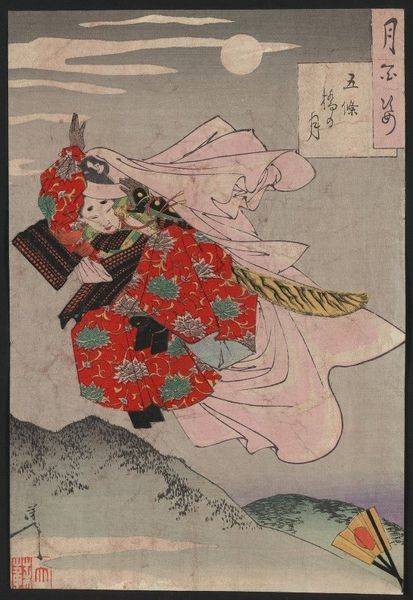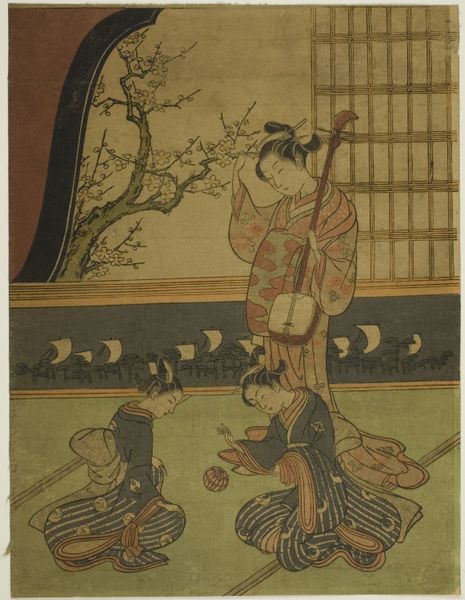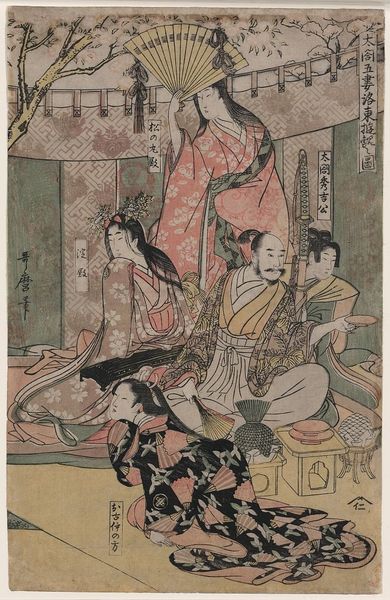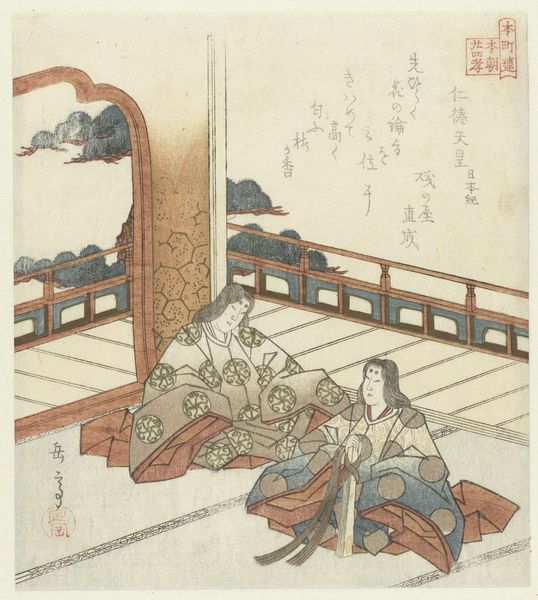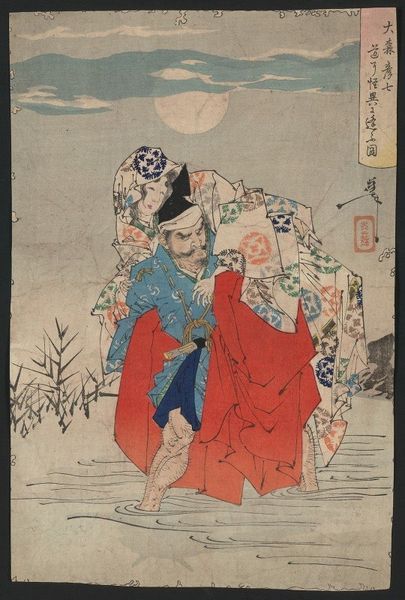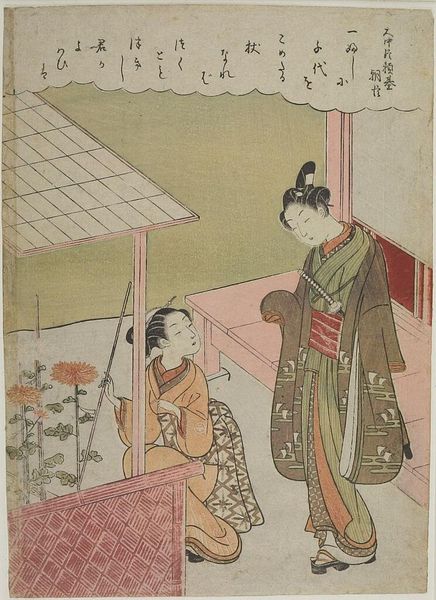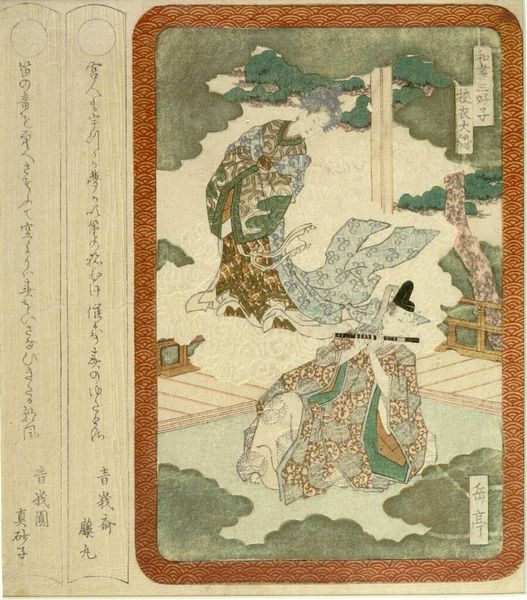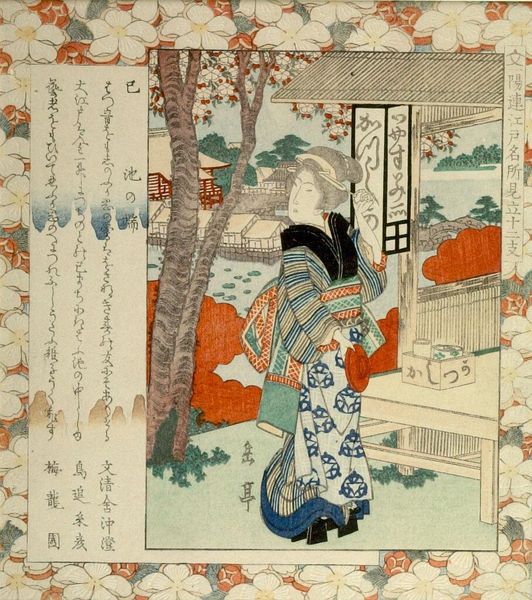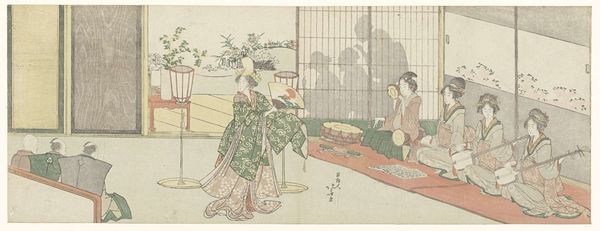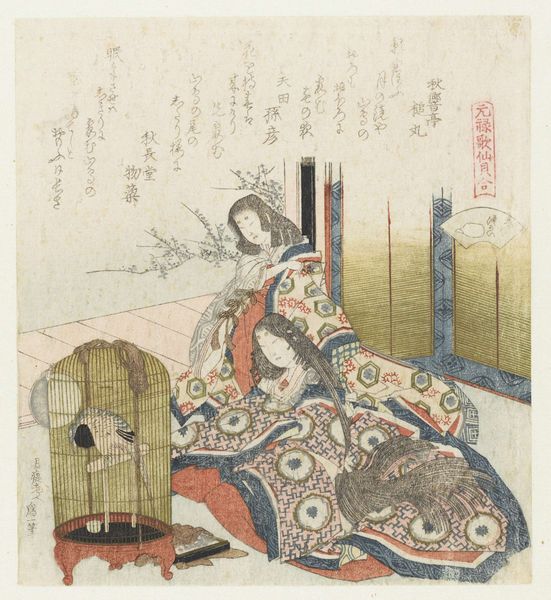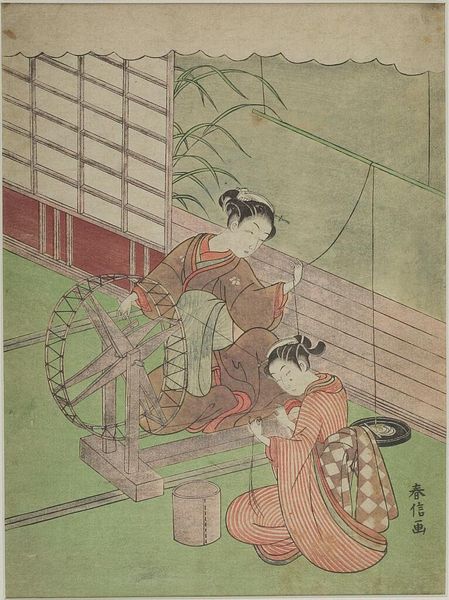
#
graffiti art
#
asian-art
#
folk art
#
mural art
#
handmade artwork painting
#
paste-up
#
naive art
#
watercolour bleed
#
watercolour illustration
#
mixed media
#
watercolor
Copyright: Public Domain: Artvee
Editor: Here we have Tsukioka Yoshitoshi's "Kuzu no Ha" from 1880, a woodblock print. It depicts a woman and a child inside a room, near a window with foliage creeping in. I'm struck by the somber mood. What can you tell me about this piece? Curator: This piece is steeped in the narrative of Kuzu no Ha, a kitsune, or fox spirit, who takes human form and marries a man named Yasuna. It explores themes of identity, sacrifice, and the liminal space between the human and animal worlds, all of which are pretty potent social and political metaphors, even today. Editor: I see. So, the woman is actually a fox spirit in disguise? Is that why the mood feels so melancholic? Curator: Precisely. Consider the context: late 19th century Japan undergoing rapid modernization. Yoshitoshi often grappled with societal anxieties and shifting identities. The story of Kuzu no Ha provided a lens to examine those themes – a critique of societal expectations imposed on women. What do you notice about the gaze of each figure? Editor: The child is looking up at the mother with adoration, while the woman seems to be peering anxiously through the window... almost as if she's about to leave. Curator: That feeling of impending departure is key. Kuzu no Ha's story always ends with her revealing her true form and leaving her family, often depicted as an act of enforced resignation, which ties into broader narratives about female agency. How does the presence of the foliage – the kuzu vine – factor into that reading? Editor: The vine is intruding into their domestic space! So is it maybe representative of the blurring lines between the outside, wild world and domestic responsibilities? Curator: Yes! It's nature reclaiming what was temporarily human, and Yoshitoshi’s commentary on what is expected versus what is authentic, especially concerning the roles and sacrifices women make in society. Editor: I hadn't considered the vine itself being so symbolic. I'll definitely be looking at ukiyo-e prints with new eyes now, appreciating these subtle visual narratives.
Comments
No comments
Be the first to comment and join the conversation on the ultimate creative platform.
